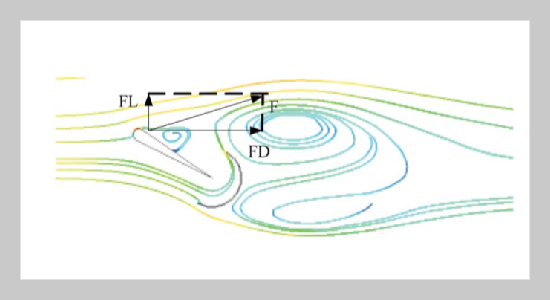REFERENCES
- [1] Feng, F., Y. Li, L. X. Chen, W. Q. Tian, and Y. W. Zhang (2014) A Simulation and Experimental Research on Aerodynamic Characteristics of Combined Type Vertical Axis Wind Turbine, Acta Energiae Solaris Sinica 35, 855860. doi: 10.3969/j.issn.0254- 0096. 2014.05.020
- [2] Wang, S. L., Y. Li, Q. B. He, and W. Xie (2014) Simulation Research of Diameter Ratio Effects on Aerodynamic Characteristic of Combined Type VAWT, Renewable Energy Resources 32, 6367. doi: 10.3969/ j.issn.1671-5292.2014.01.014
- [3] Dabiri, J. O. (2011) Potential Order-of-magnitude Enhancement of Wind Farm Power Density via Counter Rotating Vertical-axis Wind Turbine Arrays, Journal of Renewable and Sustainable Energy 3(4), 043104. doi: 10.1063/1.3608170
- [4] Li, C. C. J., R. Bhalla, and L. Hao (2015) Investigation of the Dynamic Radar Signatures of a Vertical-axis Wind Turbine, IEEE Antennas and Wireless Propagation Letters 14, 763766. doi: 10.1109/LAWP.2014. 2377693
- [5] Bartl, J., F. Pierella, and L. Saetrana (2012) Wake Measurements Behind an Array of Two Model Wind Turbines, Energy Procedia 24, 305312. doi: 10.1016/ j.egypro.2012.06.113
- [6] Li, Q. A., T. Maeda, Y. Kamada, T. Ogasawara, A. Nakai, and T. Kasuya (2017) Investigation of Power Performance and Wake on a Straight-bladed Vertical Axis Wind Turbine With Field Experiments, Energy 141, 11131123. doi: 10.1016/j.energy.2017.10.009
- [7] Parker, M. A., C. Soraghan, and A. Giles (2016) Comparison of Power Electronics Lifetime between Vertical- and Horizontal-axis Wind Turbines, IET Renewable Power Generation 10, 679686. doi: 10.1049/ iet-rpg.2015.0352
- [8] Cai, X., P. Pan, J. Zhu, R. R. Gu, and J. X. Zhang (2014) Analysis of Vertical Axis Wind Turbine Dynamic Wake with CFD Technology, Chinese Journal of Computational Mechanics 31, 675680. doi: 10.7511/ jslx201405022
- [9] Tian, L. L., N. Zhao, and W. Zhong (2012) Numerical Simulation of Wake Interactions of Wind Turbines, Acta Energiae Solaris Sinica 33, 13151320. doi: 10. 3969/j.issn.0254-0096.2012.08.011
- [10] Tian, L. L., N. Zhao, and C. H. Wu (2014) Numerical Analysis of the Wind Farm Layout Optimization, Acta Energiae Solaris Sinica 35, 462468. doi: 10.3969/j.issn.0254-0096.2014.03.015
- [11] Choi, N. J., S. H. Nam, J. H. Jeong, et al. (2013) Numerical Study on the Horizontal Axis Turbines Arrangement in a Wind Farm: Effect of Seperation Distance on the Turbine Aerodynamic Power Output, Journal of Wind Engineering and Industrial Aerodynamics 117, 1117. doi: 10.1016/j.jweia.2013.04.005
- [12] Muneer, A., M. B. Khan, U. B. Sarwar, et al. (2015) CFD Analysis of a Savonius Vertical Axis Wind Turbine, Power Generation System and Renewable Energy Technologies. IEEE, 13. doi: 10.1109/ PGSRET. 2015.7312200
- [13] Hu, D. M., H. Ouyang, and C. H. Du (2006) An Experimental Study of the Wake Structure of a Model Horizontal-axis Wind Turbine, Acta Energiae Solaris Sinica 27, 606612. doi: 10.3321/j.issn:0254-0096.2006. 06.015
- [14] Hu, D. M., X. K. Zheng, and J. P. Zhang (2015) Wake Numerical Simulation of Wind Turbine in Different Arrangement, Renewable Energy Resources 33, 684 691. doi: 10.13941/j.cnki.21-1469/tk.2015.05.007
- [15] Song, L., H. Z. Liu, and Z. X. Yang (2015) Performance Comparison for Savonius Type Wind Turbines by Numerical Analysis Approaches, Proceedings of the 2015 International Conference on Advanced Mechatronic Systems, Beijing, China, IEEE, 402406. doi: 10.1109/ICAMechS.2015.7287098
- [16] Xu, X., Z. G. Zhou, and M. Qiu (2012) Calculation of the Aerodynamic Performance of the Vertical-axis Wind Turbine, Acta Energiae Solaris Sinica 33, 197 203. doi: 10.3969/j.issn.0254-0096.2012.02.004
- [17] Preen, R. J. and L. Bull (2015) Toward the Coevolution of Novel Vertical-axis Wind Turbines, IEEE Transactions on Evolutionary Computation 19, 284292. doi: 10.1109/TEVC.2014.2316199









